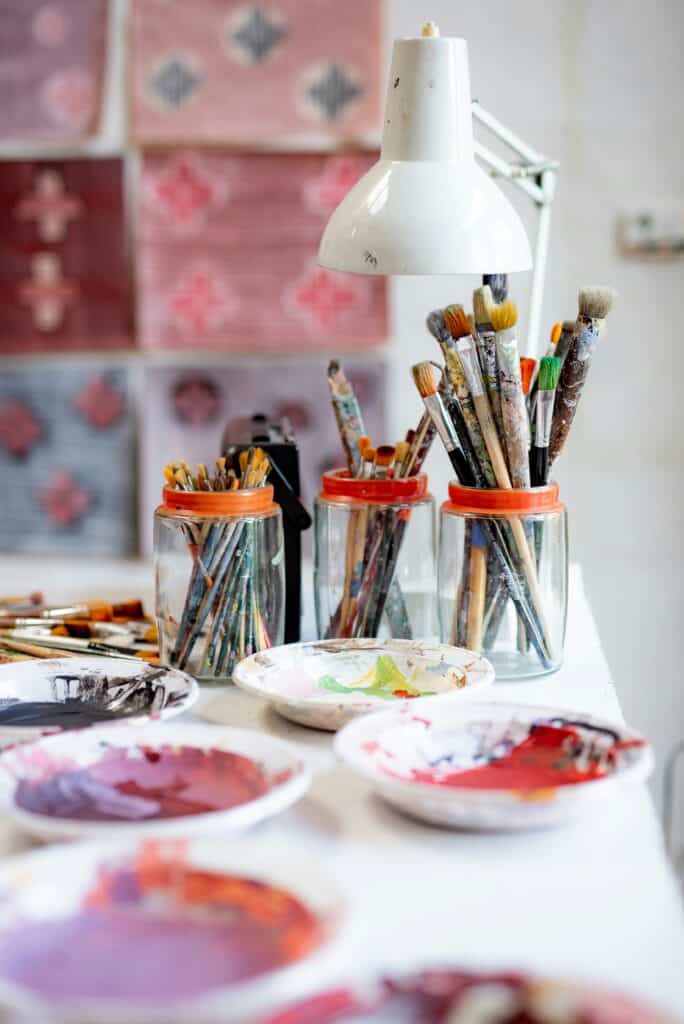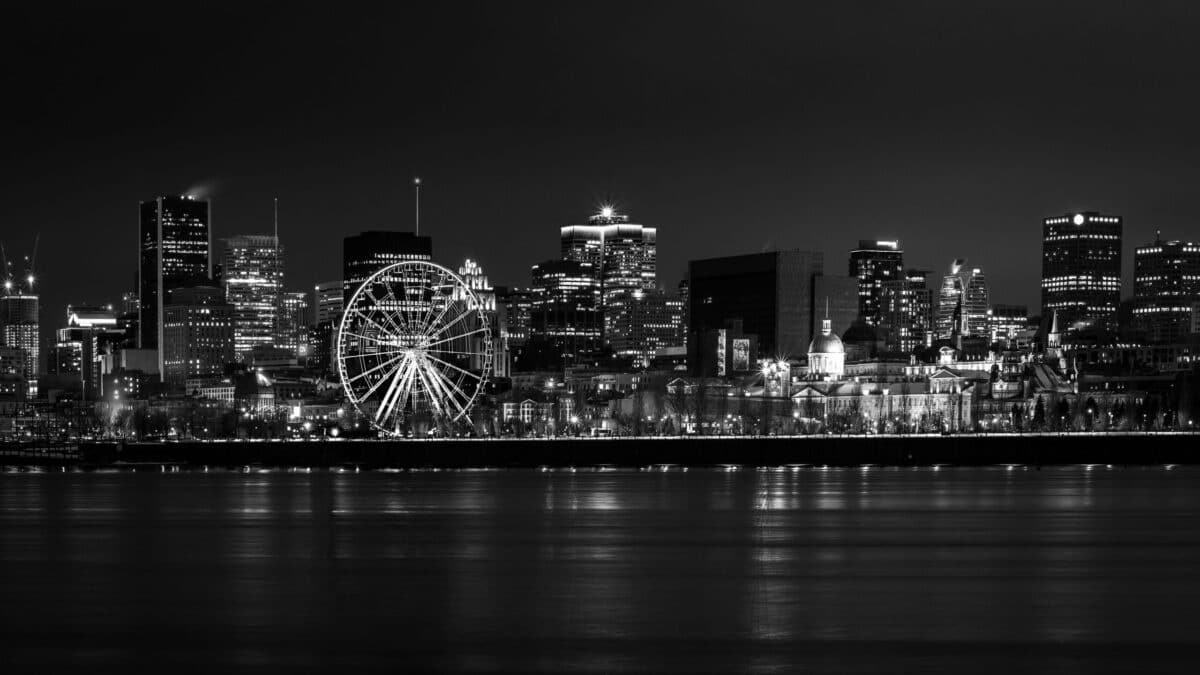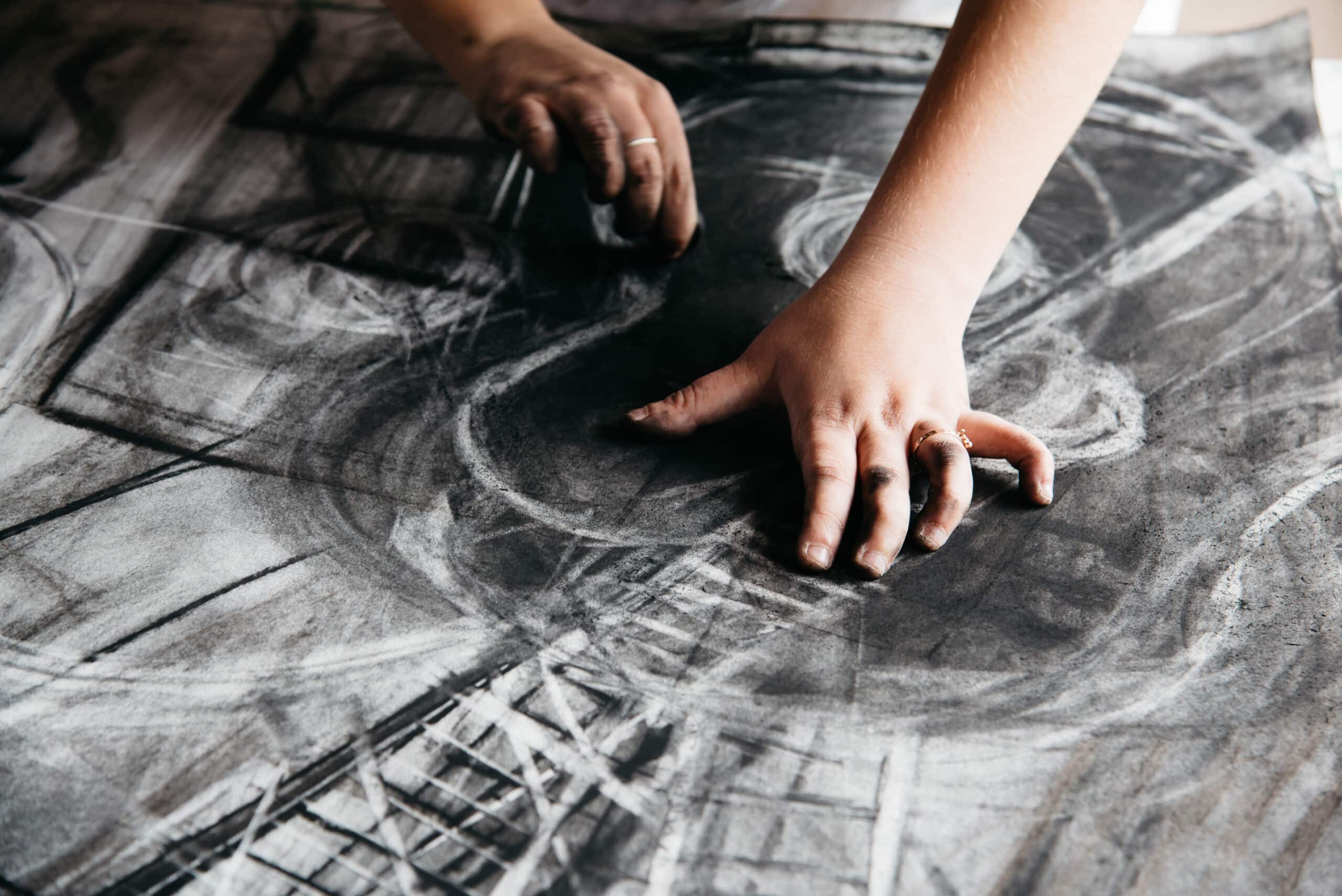Ein Künstleraufenthalt ist ein strukturiertes Programm, das Künstlern einzigartige Erfahrungen bietet, die ihre Kreativität fördern und ihnen helfen, sich beruflich weiterzuentwickeln. Diese Programme gibt es sowohl auf lokaler Ebene als auch auf der ganzen Welt, von städtischen Zentren bis hin zu abgelegenen Landschaften, und sie richten sich an eine Vielzahl von künstlerischen Disziplinen. Künstleraufenthalte sind in der Kunstszene hoch angesehen, weil sie Künstlern unschätzbare Möglichkeiten bieten, ihre Arbeit weiterzuentwickeln, einen kritischen Dialog zu führen und ihre berufliche Entwicklung zu fördern.
Die Vorteile eines Residenzprogramms für Künstler
1. Ununterbrochene kreative Zeit und Raum: Kunstaufenthalte bieten Künstlern die Möglichkeit, sich ausschließlich auf ihre künstlerische Arbeit zu konzentrieren, frei von den Ablenkungen und Verpflichtungen des Alltagslebens. Diese ungestörte Zeit und dieser Raum ermöglichen es dir, dich in deine Arbeit zu vertiefen, neue Ideen zu entdecken und mit verschiedenen Techniken oder Konzepten zu experimentieren.
2. Zugang zu Ressourcen und Einrichtungen: Residencies bieten Künstlern oft Zugang zu besonderen Ressourcen und Einrichtungen, die in ihrem üblichen Atelier oder Arbeitsbereich nicht ohne Weiteres verfügbar sind. Dazu können gut ausgestattete Ateliers, Grafik- und Medienlabore, Holzwerkstätten oder Dunkelkammern gehören. Die Verfügbarkeit dieser Ressourcen eröffnet neue Möglichkeiten und ermutigt dich, die Grenzen deines künstlerischen Schaffens zu erweitern.
3. Auseinandersetzung mit verschiedenen Perspektiven und Gemeinschaften: Kunstaufenthalte bringen Künstlerinnen und Künstler mit unterschiedlichen Hintergründen, Kulturen und künstlerischen Disziplinen zusammen. Dieses multikulturelle und interdisziplinäre Umfeld begünstigt den Austausch von Ideen, den Dialog und die Zusammenarbeit. Künstlerinnen und Künstler haben die Möglichkeit, sich mit anderen Bewohnern auszutauschen, lokale Künstler und Gemeinden zu besuchen, ihre Perspektiven zu erweitern und ihr Verständnis für verschiedene Kunstpraktiken und kulturelle Kontexte zu vertiefen.
4. Networking und berufliche Entwicklung: Künstleraufenthalte erleichtern oft Vernetzung mit Kuratoren, Galeristen, Kritikern und anderen Künstlern. Diese Verbindungen können zu Kooperationen, Ausstellungen und anderen beruflichen Möglichkeiten führen. Darüber hinaus veranstalten viele Residencies Künstlergespräche, Workshops und Rezensionen, die dir wertvolles Feedback, Mentoring und Möglichkeiten zur Förderung deiner Kunst bieten.
5. Neue Umgebungen und Einflüsse erforschen: Aufenthalte an verschiedenen Orten, ob auf dem Land, in der Stadt oder international, bringen Künstler/innen neue Landschaften, Kulturen und künstlerische Traditionen näher. Diese neuen Umgebungen können deine Arbeit inspirieren und beeinflussen, indem sie dich zum Experimentieren anregen und deine künstlerischen Grenzen erweitern. Du kannst Elemente der lokalen Kultur, der Natur oder des sozialen Kontextes in deine Arbeit einfließen lassen und so deinem künstlerischen Ausdruck mehr Reichtum und Tiefe verleihen.
6. Reflexion, Selbstentdeckung und künstlerische Erneuerung: Künstleraufenthalte bieten Künstlern die Möglichkeit, aus dem Alltag auszubrechen und sich selbst zu reflektieren. Die besondere Zeit und der besondere Raum, die ein Künstleraufenthalt bietet, fördern die Selbstreflexion und ermöglichen es den Künstlern, ihre künstlerischen Motivationen, Ziele und Prozesse zu hinterfragen und zu erforschen. Diese Selbsterkenntnis kann zu neuer Inspiration, künstlerischen Durchbrüchen und der Entwicklung einer authentischeren und verfeinerten künstlerischen Stimme führen.
Die Wahl deines Kunstaufenthaltsprogramms
Hier sind die Schlüsselfaktoren, die du bei der Auswahl eines Residenzprogramms beachten solltest, das am besten zu deiner künstlerischen Praxis und deinen Zielen passt:
1. Standort: Entscheide, ob du eine städtische Umgebung oder eine abgelegene natürliche Umgebung bevorzugst. Städtische Wohnsitze bieten die Nähe zu kulturellen Einrichtungen, Galerien und einer lebendigen Kunstszene, während ländliche oder abgelegene Wohnsitze einen ruhigen Rückzugsort inmitten der Natur bieten, der dir Einsamkeit und Inspiration bietet, während du neue Arbeiten erstellst oder über die Perspektiven deines aktuellen Werks nachdenkst.
2. Dauer: Bestimme die Dauer, die du für den Aufenthalt aufbringen kannst. Einige Programme bieten kurze Aufenthalte von mehreren Wochen an, während andere längere Aufenthalte von mehreren Monaten anbieten. Berücksichtige deine Verfügbarkeit und die Zeit, die du brauchst, um dich ganz auf deine künstlerische Praxis einzulassen.
3. Einrichtungen und Ressourcen: Prüfe die Einrichtungen und Ressourcen, die den Künstlern zur Verfügung stehen. Achte darauf, dass das Programm gut ausgestattete Ateliers, spezielle Ausrüstung und Zugang zu Materialien für deine künstlerische Disziplin bietet. Finde heraus, ob das Programm Ressourcen wie Druckereien, digitale Labore oder Holzwerkstätten bereitstellt, die deinen künstlerischen Bedürfnissen entsprechen.
4. Unterstützung und Mentoring: Erkundige dich nach dem Umfang der Unterstützung und Betreuung, die das Aufenthaltsprogramm bietet. Einige Programme bieten Mentoring durch etablierte Künstler oder Kuratoren an, während andere Workshops, Rezensionen oder Interviews mit Künstlern anbieten. Überlege, ob das Programm Möglichkeiten zur beruflichen Entwicklung und Beratung bietet, um deine künstlerische Praxis zu verbessern.
5. Finanzierung und finanzielle Überlegungen: Prüfe die finanziellen Aspekte des Aufenthaltsprogramms. Einige Aufenthaltsprogramme bieten finanzielle Unterstützung in Form von Stipendien, Zuschüssen oder Beihilfen, während andere von den Künstlern verlangen, dass sie ihre Kosten selbst tragen. Berücksichtige dein Budget und prüfe die Finanzierungsmöglichkeiten, um sicherzustellen, dass das Programm in deinem Budget liegt.
6. Gemeinschaft und Vernetzungsmöglichkeiten: Beurteile die Aspekte der Gemeinschaft und der Vernetzung. Achte auf Programme, die Möglichkeiten zum Austausch mit anderen Künstlern, Kuratoren und Kunstschaffenden bieten. Überlege, ob der Aufenthalt die Verbindung zu den lokalen Gemeinschaften fördert und dir eine Plattform bietet, um deine Arbeit zu präsentieren.
7. Reputation und Erfolg der Alumni: Überprüfe den Ruf des Studiengangs und den Erfolg seiner Absolventen. Achte auf Zeugnisse oder Referenzen früherer Stipendiaten, um ihre Erfahrungen und Erfolge zu beurteilen. Achte darauf, ob das Programm in der Vergangenheit Künstler/innen unterstützt und gefördert hat.

Bewirb dich für ein Programm für Kunstaufenthalte
Hier findest du einige Tipps, die dir helfen, dich im Bewerbungsprozess zurechtzufinden und eine überzeugende Bewerbung einzureichen, die deine Chancen auf eine Aufnahme in eine Künstlerresidenz erhöht:
Verstehe den Bewerbungsprozess
- Mache dich mit den Komponenten der Anwendung vertraut: Überprüfe die typischen Bestandteile, die für eine Bewerbung um einen Kunstaufenthalt erforderlich sind. Dazu gehören oft eine künstlerische Stellungnahme, ein Portfolio, ein Lebenslauf und ein Projektvorschlag. Verstehe den Zweck der einzelnen Elemente und wie sie zusammen ein vollständiges Bild deiner künstlerischen Praxis ergeben.
- Achte auf bestimmte Richtlinien: Jedes Ausbildungsprogramm kann spezifische Richtlinien und Anforderungen für seine Bewerbung haben. Nimm dir die Zeit, diese Richtlinien gründlich zu lesen und zu verstehen. Achte auf Details wie Wortgrenzen, Dateiformate und spezielle Anweisungen für jeden Teil der Bewerbung.
- Passe deine Bewerbung an den Wohnsitz an: Passe deine Bewerbung an das jeweilige Residenzprogramm an. Gestalte deine künstlerische Stellungnahme, dein Portfolio und deinen Projektvorschlag so, dass sie zeigen, wie deine Arbeit mit dem Auftrag, den Themen oder den Zielen des Programms übereinstimmt. Eine Möglichkeit, dies alles zu tun, ist die Erstellung eines speziellen Seite auf deiner Website für deinen Beitrag. Ob online oder auf Papier, zeige, dass du dich gut informiert hast und wirklich an der Stelle interessiert bist.
Formuliere ein überzeugendes Künstlerstatement
- Zeige deine künstlerische Vision und deine Beweggründe: Schreibe eine ein künstlerisches Statement, das deine künstlerische Vision, deine Motivation und deine Ziele ausdrückt. Kommuniziere die Konzepte, Themen und Einflüsse, die deiner Arbeit zu Grunde liegen. Demonstriere ein klares Verständnis deiner Arbeit und ihres Platzes in der zeitgenössischen Kunstlandschaft.
- Demonstriere Zusammenhalt und Entwicklung: Stelle in deiner künstlerischen Erklärung eine zusammenhängende Erzählung dar, die die verschiedenen Aspekte deiner Arbeit miteinander verbindet. Zeige die Entwicklung deiner Arbeit im Laufe der Zeit und zeige, wie sich deine Ideen weiterentwickelt haben. Betone die Einzigartigkeit und Individualität deiner künstlerischen Stimme.
- Verwende eine ansprechende Sprache und eine klare Struktur: Schreibe klar, prägnant und ansprechend. Verwende eine Sprache, die deinen künstlerischen Stil widerspiegelt und deine Fähigkeit, komplexe Konzepte zu vermitteln, unter Beweis stellt. Gliedere dein Artist Statement logisch und übersichtlich und führe den Leser durch deinen künstlerischen Weg und deine Absichten.
Stell ein beeindruckendes Portfolio zusammen
- Präsentiere deine Arbeit: Wähle Kunstwerke für dein Portfolio aus, die die Vielfalt und Breite deiner künstlerischen Praxis zeigen. Nimm verschiedene Stile, Techniken und Themen auf, um deine Vielseitigkeit und Bandbreite als Künstlerin oder Künstler selbstbewusst zu präsentieren. Zeige, dass du eine Vielzahl von Materialien und Herangehensweisen verwenden kannst.
- Erstelle eine zusammenhängende Präsentation: Organisiere dein Portfolio auf eine optisch ansprechende und kohärente Weise. Überlege dir den Fluss, die Reihenfolge und die Gruppierung der Kunstwerke, um eine Erzählung oder einen visuellen Dialog zu schaffen. Achte auf die Ästhetik deiner Präsentation und stelle sicher, dass sie dein künstlerisches Empfinden widerspiegelt. Eine Möglichkeit, dies zu tun, besteht darin, dein Online-Portfolio auf einer Plattform zu erstellen, die auf die Bedürfnisse eines Künstlers zugeschnitten ist, z. B. Format.
- Hebe die konzeptionelle Tiefe und das technische Können hervor: Betone die konzeptionelle Tiefe deiner Arbeit in deinem Portfolio. Füge unterstützende Texte oder Bildunterschriften hinzu, die einen Einblick in die Ideen und Prozesse hinter deinen Arbeiten geben. Zeige dein technisches Geschick, dein handwerkliches Können und deine Liebe zum Detail, um dein künstlerisches Können zu unterstreichen.
Erstelle einen überzeugenden Projektvorschlag
- Definiere deine Ziele klar und deutlich: Erkläre klar und deutlich die Ziele und erwarteten Ergebnisse des Projekts. Erkläre, was du während deines Aufenthalts zu erreichen hoffst und wie es mit dem Auftrag oder Thema des Programms zusammenhängt. Achte darauf, dass deine Ziele realistisch sind und innerhalb des vorgegebenen Zeitrahmens erreicht werden können.
- Zeigen Sie Originalität und Machbarkeit: Hebe die Originalität und die innovativen Aspekte deines vorgeschlagenen Projekts hervor. Zeige auf, wie dein Projekt Grenzen überschreitet, Neuland erkundet oder sich mit dem aktuellen Diskurs auseinandersetzt. Lege einen klaren Plan für die Projektdurchführung vor, einschließlich der benötigten Ressourcen und der erforderlichen Meilensteine.
- Verbinde dein Projekt mit der Residenz: Stelle eine enge Verbindung zwischen deinem vorgeschlagenen Projekt und dem spezifischen Aufenthaltsprogramm her. Zeige auf, wie das Umfeld, die Ressourcen, die Mentoren oder die Gemeinschaft dein Projekt fördern oder unterstützen werden. Erkläre, warum diese Aufenthaltsmöglichkeit entscheidend für den Erfolg deines Projekts ist.
Empfehlungen und Referenzen einholen
- Wähle Referenzen, die deine Arbeit kennen: Wähle Referenzen, die mit deiner künstlerischen Praxis vertraut sind und deine Fähigkeiten, Fertigkeiten und dein Potenzial einschätzen können. Denk an Professoren, Mentoren, Kuratoren oder andere Künstler, die deine Arbeit aus erster Hand gesehen haben.
- Gib relevante Informationen zu deinen Referenzen an: Setze dich rechtzeitig mit den Empfehlern in Verbindung und informiere sie über das Residency-Programm und seine Anforderungen. Teile deine künstlerische Stellungnahme, dein Portfolio und deinen Projektvorschlag mit, um ihnen den Kontext und Tipps für das Verfassen eines zielgerichteten und effektiven Empfehlungsschreibens zu geben.
- Folge nach und drücke deine Dankbarkeit aus: Nachdem du deine Empfehlungsschreiben erhalten hast, schicke einen Dankesbrief oder eine E-Mail. Bleib in Kontakt mit deinen Kontakten und halte sie über deine Fortschritte und zukünftigen Projekte auf dem Laufenden.
Korrekturlesen und bearbeiten
- Bearbeite sie für mehr Klarheit und Kohärenz: Überprüfe deine gesamte Bewerbung auf Grammatik, Rechtschreibung und Klarheit. Achte darauf, dass dein Text prägnant, einheitlich und fehlerfrei ist. Verwende eine angemessene Sprache und Terminologie, die deine Professionalität und dein Verständnis für die Kunstwelt widerspiegelt.
- Hol dir Feedback von anderen: Teile deine Bewerbungsunterlagen mit vertrauenswürdigen Kollegen, Mentoren oder Beratern, um Feedback zu erhalten. Höre dir ihre Vorschläge an und nimm konstruktive Kritik auf, um die Gesamtqualität deiner Bewerbung zu verbessern.
- Poliere die visuelle Präsentation: Achte auf die optische Präsentation deiner Bewerbung. Achte darauf, dass deine Dokumente gut organisiert, optisch ansprechend und leicht zu navigieren sind. Achte auf das Layout, die Wahl der Schriftart und die Verwendung von Bildern oder Grafiken, um die Gesamtästhetik zu verbessern.
Befolge die Anweisungen zur Einreichung
- Halte Fristen ein: Beachte die Bewerbungsfristen und sorge dafür, dass du deine Bewerbung rechtzeitig vor Ablauf der Frist einreichst. Plane genügend Zeit für unvorhergesehene Umstände oder technische Schwierigkeiten ein.
- Format-Dokumente korrekt: Beachte die spezifischen Formatierungsrichtlinien für jeden Teil der Bewerbung. Achte auf die Dateiformate, Bildgrößen und andere technische Anforderungen, die im Aufenthaltsprogramm aufgeführt sind.
- Überprüfe und sammle die benötigten Materialien: Erstelle eine Checkliste, um sicherzustellen, dass du alle erforderlichen Materialien und Belege beigefügt hast. Prüfe vor dem Einreichen, ob deine Bewerbungsunterlagen vollständig sind.
Navigieren durch den Auswahlprozess
Hier sind drei wichtige Punkte, die du beachten solltest, wenn du versuchst, das Auswahlverfahren für ein Stipendienprogramm zu meistern:
1. Verstehen der Bewertungskriterien
Aufenthaltsprogramme haben in der Regel bestimmte Bewertungskriterien, wie z. B. künstlerische Leistung, Originalität, Durchführbarkeit des Projekts, Übereinstimmung mit dem Thema oder Auftrag des Aufenthalts und Potenzial für künstlerische Entwicklung. Informiere dich über die Auswahlrichtlinien des Programms oder wende dich direkt an den Koordinator des Programms, um den Bewertungsprozess zu verstehen. Gestalte deine Bewerbungsunterlagen so, dass sie die für die Kriterien wichtigsten Aspekte hervorheben. Denke daran, dass das Auswahlverfahren subjektiv ist und ein Gremium aus Künstlern und Kunstfachleuten beteiligt ist.
2. Erwartungen verwalten
Bereite dich auf unterschiedliche Ergebnisse vor und steuere deine Erwartungen. Sei dir darüber im Klaren, dass die Stipendienplätze umkämpft sind und dass selbst hochqualifizierte Künstler/innen nicht immer angenommen werden. Eine Ablehnung schmälert nicht deinen künstlerischen Wert, denn jedes Programm hat seine eigenen Vorlieben und Einschränkungen. Nutze sie als Gelegenheit zur Selbstreflexion und zum Wachstum. Bitte das Programm um Rückmeldung, falls vorhanden, um zukünftige Bewerbungen zu verbessern. Bleibe positiv und erkunde andere Möglichkeiten. Es gibt zahlreiche Residencies und künstlerische Projekte, die sich mit deiner Praxis decken könnten.
3. Mit Benachrichtigungen umgehen und vorwärts kommen
Wenn du die Zusage erhalten hast, feiere deinen Erfolg und treffe die notwendigen Vorkehrungen für die Zeit deines Aufenthalts. Im Falle einer Ablehnung solltest du deine Enttäuschung verarbeiten und deine Ziele neu überdenken. Nutze sie als Motivation, um Feedback einzuholen und andere Aufenthalte oder Möglichkeiten in Betracht zu ziehen. Wenn du auf der Warteliste stehst, bleibe offen für andere Möglichkeiten und sei darauf vorbereitet, sofort zu reagieren, wenn du ein Angebot erhältst. Unabhängig vom Ergebnis solltest du deine künstlerische Arbeit fortsetzen, nach neuen Möglichkeiten suchen und in der Kunstszene aktiv bleiben. Bewahre dir eine positive Einstellung, fördere deine Kreativität und entwickle dein Portfolio und deine künstlerische Stellungnahme für zukünftige Bewerbungen weiter.












